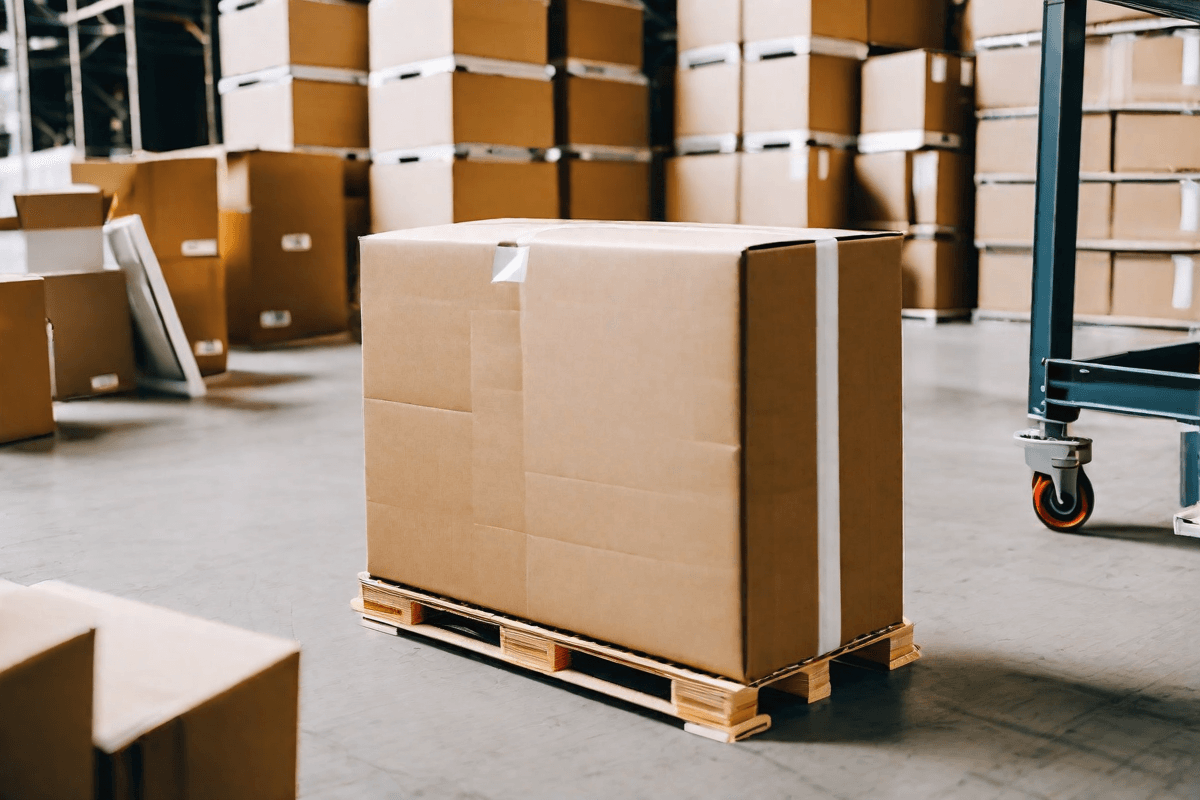
Full Truckload Freight: FTL Shipping Guide
In the world of logistics and transportation, full truckload freight (FTL) plays a crucial role in moving goods efficiently across vast distances. Understanding the intricacies of FTL shipping can help businesses and . This comprehensive guide will provide you with all the information you need to navigate the world of full truckload freight.
Understanding Full Truckload Freight
Full truckload freight, as its name suggests, refers to shipments that occupy an entire truck trailer. Unlike less-than-truckload (LTL) shipments, which are combined with other shipments to maximize truck capacity, FTL shipments take up the entire trailer space. This makes FTL shipping a preferred choice for larger or bulkier shipments that require dedicated transportation.
Definition of Full Truckload Freight
Full truckload freight can be defined as a shipping method wherein the entire capacity of a truck trailer is utilized for a single shipment. The shipment is loaded onto the truck at the origin and delivered directly to the destination without any intermediate stops or handling.
Benefits of Full Truckload Freight
There are several key benefits associated with utilizing full truckload freight for your shipping needs. Firstly, since the entire truck is dedicated to your shipment, FTL shipping offers faster transit times compared to LTL shipments. This can be a significant advantage when time-sensitive deliveries are crucial for your business.
Additionally, FTL shipments are less prone to loss or damage since they are not handled or transferred extensively during transit. This can provide peace of mind, especially when transporting fragile or high-value items. Furthermore, FTL shipping provides more flexibility in terms of scheduling pickups and deliveries, allowing for better control over your supply chain.
Another benefit of FTL shipping is the potential for cost savings. While it may seem counterintuitive that utilizing an entire truck trailer for a single shipment would be more cost-effective, it can actually be more economical in certain situations. For example, if you have a large shipment that would require multiple LTL shipments to transport, consolidating it into a single FTL shipment can often result in lower overall transportation costs.
Moreover, FTL shipping offers enhanced security. Since the shipment remains intact throughout the entire journey, there is a reduced risk of theft or tampering. This is particularly important when transporting valuable goods or sensitive materials.
Furthermore, FTL shipping provides a higher level of customer service. With dedicated transportation, you have more control over the delivery process, allowing you to provide accurate and reliable delivery estimates to your customers. This can help build trust and loyalty, leading to repeat business and positive word-of-mouth recommendations.
Lastly, FTL shipping can contribute to a more sustainable supply chain. By maximizing truck capacity and reducing the number of shipments, FTL shipping helps minimize carbon emissions and fuel consumption. This aligns with environmental goals and demonstrates corporate social responsibility.
Key Components of FTL Shipping
Understanding the key components of FTL shipping is essential to ensuring a successful and efficient transportation process. Let's explore two crucial aspects of full truckload freight: types of FTL shipping and essential equipment for FTL shipping.
Types of FTL Shipping
FTL shipping encompasses various types, depending on the specific needs of your shipment. Dry van FTL is the most common type, suitable for general cargo that doesn't require temperature-controlled environments. This type of FTL shipping is often used for transporting consumer goods, electronics, and non-perishable items.
Reefer FTL involves refrigerated trailers, ideal for transporting perishable goods such as produce or pharmaceuticals. These trailers are equipped with temperature control systems that can maintain specific temperature ranges, ensuring the freshness and integrity of the cargo throughout the transportation process. Reefer FTL is commonly used in the food industry, where maintaining the cold chain is crucial to preserve the quality of the products.
Flatbed FTL utilizes flatbed trailers, which are suitable for oversized or irregularly shaped cargo. This type of FTL shipping is commonly used for transporting construction materials, machinery, and large equipment. The open design of flatbed trailers allows for easy loading and unloading of cargo from the sides or the top, making it versatile for various types of shipments.
Essential Equipment for FTL Shipping
Utilizing the appropriate equipment is vital when it comes to FTL shipping. Apart from the truck trailer itself, securing the cargo properly is essential to ensure its safety during transportation. Straps, chains, and dunnage are commonly used to secure the shipment and prevent it from shifting or getting damaged en route.
In addition to securing the cargo, FTL shipping often requires specialized equipment depending on the nature of the shipment. For example, for oversized or overweight cargo, specialized lifting equipment such as cranes or forklifts may be necessary to load and unload the cargo safely. In some cases, cargo may require additional protection, such as tarpaulins or covers, to shield it from adverse weather conditions or debris during transit.
Moreover, FTL shipping may also involve the use of tracking and monitoring devices to ensure real-time visibility of the cargo's location and condition. These devices can provide valuable data such as temperature readings, humidity levels, and even shock or vibration alerts, allowing for proactive measures to be taken if any issues arise during transportation.
Furthermore, FTL shipping often requires the involvement of skilled professionals who are experienced in handling specific types of cargo. For example, transporting hazardous materials or dangerous goods may require drivers with special certifications and training to ensure compliance with safety regulations and minimize risks.
In conclusion, FTL shipping encompasses various types tailored to different cargo requirements, and the use of appropriate equipment is crucial to ensure the safe and efficient transportation of goods. By understanding the key components of FTL shipping, businesses can make informed decisions and to meet customer demands effectively.
The Process of FTL Shipping
Now that we have looked at the key components of FTL shipping, it's time to dive into the process itself. Understanding the steps involved in FTL shipping can help you optimize your logistics operations and make the most of this transportation method.
Booking and Scheduling FTL Shipments
The first step in the FTL shipping process is booking and scheduling your shipment. This involves providing the necessary information to the FTL shipping provider, such as origin and destination addresses, desired pickup and delivery dates, and any special requirements for the shipment. The provider will then coordinate the logistics and assign a suitable truck for transportation.
When booking and scheduling FTL shipments, it is important to consider various factors such as the size and weight of the cargo, any specific handling instructions, and the availability of trucks. Efficient coordination and communication between all parties involved are essential to ensure a smooth and timely process.
Once the shipment is confirmed, it is crucial to communicate effectively with all parties involved, including the shipper, carrier, and consignee, to ensure a smooth pickup and delivery process. This includes providing any additional instructions or documentation required for the shipment.
Loading and Unloading Procedures
Efficient loading and unloading procedures are vital to minimizing transit times and avoiding delays. When loading the shipment onto the truck, it is important to ensure it is properly secured and balanced to maintain stability during transportation. This can be achieved by using appropriate packaging materials, such as pallets, straps, and cushioning materials, to protect the cargo from damage.
Clear communication between all parties involved is crucial during the loading and unloading process. This includes providing accurate information about the shipment's weight, dimensions, and any special handling instructions to the carrier. Additionally, maintaining a well-organized shipping and receiving area can help streamline the process and reduce the risk of errors or delays.
Unloading the shipment at the destination should be done with care, taking into consideration any specific requirements or handling instructions. This may involve using specialized equipment, such as forklifts or cranes, to safely remove the cargo from the truck and place it in the designated area.
During the unloading process, it is important to inspect the cargo for any signs of damage or discrepancies. This can be done by comparing the received shipment with the accompanying documentation, such as the bill of lading or packing list. Any issues should be promptly reported to the carrier or shipping provider to initiate the necessary actions for resolution.
By following efficient loading and unloading procedures, businesses can ensure that their FTL shipments are handled with care and delivered in a timely manner. This not only helps maintain customer satisfaction but also minimizes the risk of damage or loss during transportation.
Pricing Factors in FTL Shipping
When it comes to pricing in FTL (Full Truckload) shipping, several factors influence the overall cost of transportation. Understanding these factors can help you estimate and budget for your shipping expenses more effectively.
One of the key factors that affect the pricing of FTL shipping is the distance between the origin and destination. The longer the distance, the higher the transportation costs. This is because longer distances require more time, resources, and fuel consumption. Fuel costs also play a significant role in pricing, as they can fluctuate based on market conditions. Fuel surcharges may be applied to account for these fluctuations and ensure that the transportation costs remain fair and reasonable.
Another important factor to consider is the weight and size of your FTL shipment. The weight of the shipment directly impacts the pricing, as heavier shipments require more fuel to transport. This increased fuel consumption results in higher costs. Additionally, oversized or bulky shipments may incur additional charges. These charges are often due to the need for specialized equipment or permits to accommodate the size or weight of the shipment. It is essential to accurately measure and provide the weight and dimensions of your shipment to the shipping company to ensure accurate pricing and avoid any unexpected charges.
Furthermore, the type of goods being shipped can also influence the pricing in FTL shipping. Some goods may require special handling, such as temperature-controlled environments or fragile item packaging. These additional requirements can increase the overall cost of transportation.
Additionally, the time sensitivity of the shipment can impact the pricing. If you require expedited delivery or have specific delivery time windows, the shipping company may charge a premium for the faster service or to accommodate the specific time requirements.
Lastly, the current market conditions and demand for FTL shipping services can affect pricing. During peak seasons or high-demand periods, prices may increase due to limited capacity and higher competition for available trucks.
By considering these various factors, you can better understand the pricing structure of FTL shipping and make informed decisions when estimating and budgeting for your shipping expenses.
Selecting a Reliable FTL Shipping Provider
Choosing the right FTL shipping provider is vital to ensuring a smooth and efficient transportation process. Here are some key considerations when evaluating potential providers:
Evaluating Provider Capabilities
Assess the provider's capabilities in terms of equipment availability, network coverage, and experience in handling FTL shipments. It is important to choose a provider that can accommodate your unique shipping requirements and deliver reliable services consistently.
When evaluating a provider's equipment availability, consider factors such as the type and condition of their trucks, trailers, and other necessary equipment. A reliable provider should have a well-maintained fleet that is capable of handling your specific cargo needs. Additionally, inquire about the provider's network coverage to ensure they can reach your desired destinations efficiently. A provider with a wide network coverage can offer better flexibility and faster transit times.
Experience is another crucial factor to consider when selecting an FTL shipping provider. Look for providers with a proven track record in handling FTL shipments. An experienced provider will have a better understanding of the challenges that may arise during transportation and will be equipped to handle them effectively. They will also have established relationships with key stakeholders in the industry, such as customs officials and border agents, which can help expedite the shipping process.
Importance of Provider Reputation
Consider the reputation of the FTL shipping provider within the industry. Research customer reviews and testimonials to gauge their track record in terms of on-time deliveries, customer service, and overall satisfaction. A reputable provider with a strong industry presence is more likely to deliver a high level of service and reliability.
When assessing a provider's reputation, pay attention to their on-time delivery performance. Timely deliveries are crucial in maintaining a smooth supply chain and avoiding costly disruptions. Look for providers that have a history of consistently meeting or exceeding delivery deadlines.
Customer service is another important aspect to consider. A reliable FTL shipping provider should have a dedicated customer service team that is responsive and proactive in addressing any concerns or issues that may arise during the shipping process. Prompt communication and effective problem-solving can make a significant difference in ensuring a positive shipping experience.
Overall satisfaction is a key indicator of a provider's reliability. Look for providers that have a high percentage of satisfied customers. Positive testimonials and recommendations from other businesses in your industry can provide valuable insights into the provider's performance and reliability.
With this comprehensive guide, you now have a solid understanding of full truckload freight and its key components, the process involved, pricing factors, and how to select a reliable FTL shipping provider. Armed with this knowledge, you can make informed decisions about your shipping needs and optimize your supply chain for maximum efficiency and effectiveness.
Remember, FTL shipping offers a cost-effective and reliable solution for transporting larger or bulkier shipments. By partnering with a reputable FTL shipping provider and implementing efficient logistics practices, you can streamline your transportation operations and take your supply chain to new heights.
Whether you are a small business looking to expand your reach or a large corporation aiming to enhance your distribution capabilities, selecting a reliable FTL shipping provider is crucial. Take the time to evaluate providers based on their capabilities, reputation, and overall fit with your specific shipping requirements. By doing so, you can ensure a seamless transportation process and position your business for success in the competitive market.
Nitro Logistics Team
Logistics Expert
The Nitro Logistics team brings together decades of experience in logistics, fulfillment, and supply chain optimization.
Stay Updated
Get the latest insights in logistics and fulfillment delivered to your inbox.


